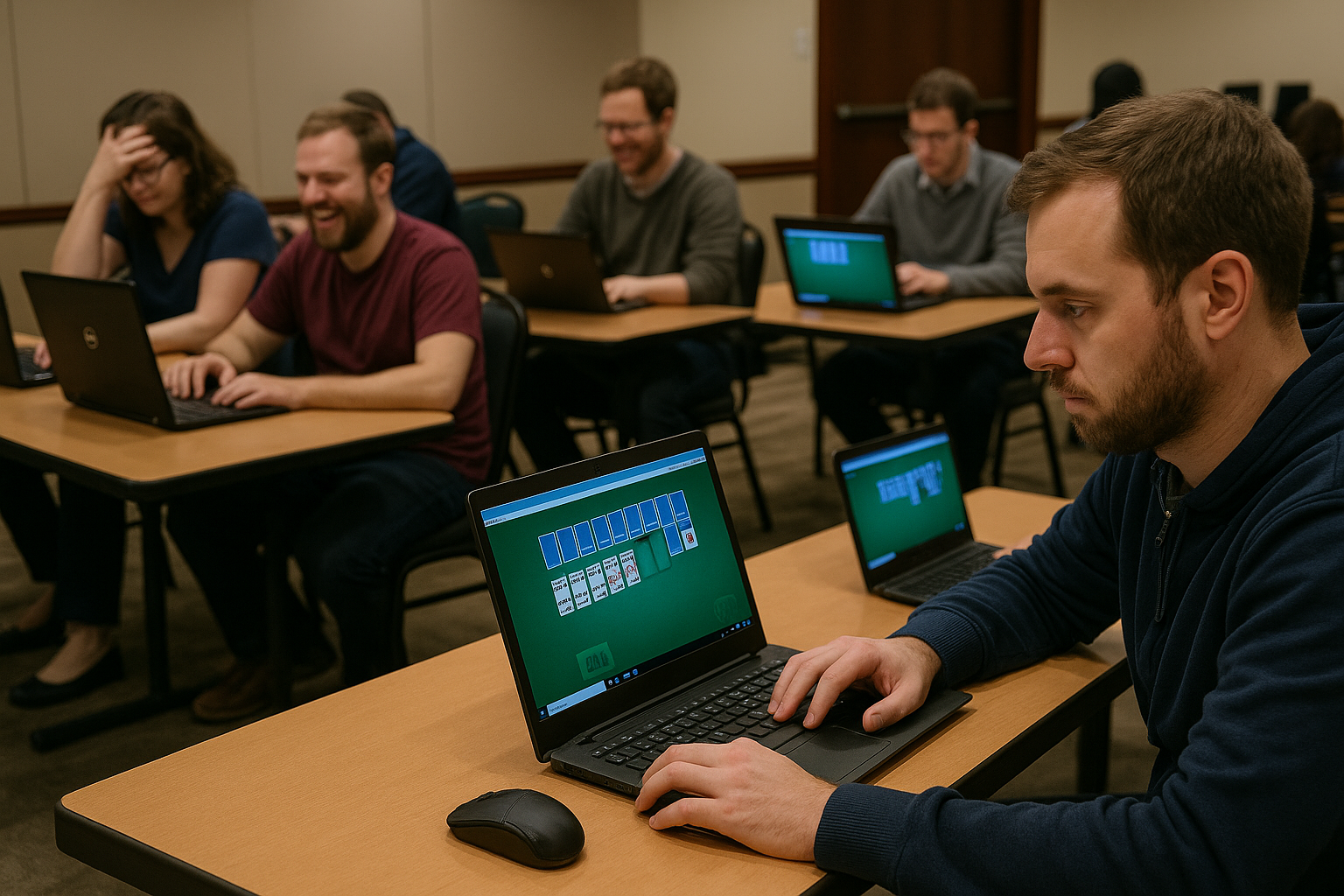Solitaire Competitions: Real Events, Formats, and Funny Moments
The hall was quiet—just the hum of laptops and the soft clack of mice. A finalist’s hand trembled as a perfect 3‑card window appeared…and then a tiny misclick sent the card to the wrong stack. Collective sigh, then laughter. That’s the charm of solitaire competition: solitary skills, shared nerves.
Have you ever timed your own Klondike clears? Would a few tempo rules turn “almost” into “win”? And what would happen if you practiced on multiple variants back‑to‑back like a decathlon?
Below you’ll find a quick history of real events, the formats organizers use, a snapshot of records that players chase, a few funny moments, and a short drill to sharpen your speed—plus internal links to practice each variant on Solitairen only.
Where Solitaire Became a Tournament Sport (for real)
-
Over the past decade, major anniversary events and app‑based competitions turned solitaire from desk pastime into spectacle.
-
Public tournaments typically ran inside popular collections with multi‑round brackets across variants (e.g., Klondike, FreeCell, Spider, TriPeaks, Pyramid).
-
Finals were often time‑based: same deal for everyone, fastest clean clear (or highest score under a goal) wins.
-
Community speedrun races and seasonal cups now mirror that format: short windows, preset deals, leaderboard pressure—pure adrenaline for a “quiet” game.
Takeaway: Competitive solitaire rewards precision under time pressure and adaptability across variants.
Common Tournament Formats (and what they test)
Format
How it works
What it tests
Where to practice
Time Attack
Solve an identical deal fastest.
Recognition speed, clean sequences.
Fewest Moves
Same deal; minimal moves wins.
Planning depth, restraint.
Score Chase
Goal‑based (e.g., reach N points).
Risk management, combo timing.
Variant Decathlon
Rotate through 3–5 variants.
Versatility, quick rule switching.
Endurance Sprint
Most clears in a time window.
Focus, tilt control.
Bonus for connoisseurs: fewer‑known gems can be part of side events. Warm up with Accordion on Solitairen when you want a harder skill lab.
Records and Remarkable Feats (the targets players chase)
-
Sub‑10‑second Klondike clears (draw‑one) have been achieved by elite speedrunners—blink‑and‑it’s‑over runs that treat solitaire like a sprint.
-
Draw‑three records in the teens of seconds exist too, demanding ruthless stock cycling and flawless sequencing.
-
FreeCell endurance stories abound: thousands of logged games, near‑perfect monthly win rates from disciplined, methodical play.
Why it matters: Whether you aim for a personal best or a friendly office cup, having benchmarks keeps practice honest and motivating.
Funny (and painfully relatable) tournament moments
-
The Final‑Second Misclick: champion‑level player drags a card one column too far—stream chat groans, then applauds the grace under pressure.
-
The Underdog Upset: a casual participant outpaces seasoned “house” players by restarting bad seeds quicker—proof that strategy beats myth.
-
The Silent Roar: eight finalists finish within seconds; the loudest sound in the room is the victory cascade animation.
How to Host a Mini Cup on Solitairen (simple, fair, fun)
-
Pick your ladder: 3 rounds = Klondike → Spider → FreeCell.
-
Set rules: 5‑minute cap per round; ties break by fewest moves.
-
Standardize deals: everyone plays the same seed (announce before start).
-
Scoreboard: 10 pts for 1st, 7 for 2nd, 5 for 3rd, 3 for 4th, 1 for a clean finish.
-
Tilt guardrails: one restart allowed per round—declare it out loud.
Practice links (rotate anchors for SEO naturalness):
5‑Minute Micro Drill: “Fast but Clean”
Goal: reduce hesitation on high‑value choices (reveal first, preserve options, sequence for cascades).
-
Setup (60 sec): open a fresh deal on Solitairen; set a 4‑minute timer.
-
Run (3 min): before each move, label it in your head Grow / Hold / Shrink. Prefer Grow; take Shrink only if it creates an immediate follow‑up.
-
Review (1 min): note total clears, longest chain, and any Shrink that backfired. Write one rule for the next session (e.g., “scan three piles back before any 1‑step move”).
Repeat for 5–8 games; track your average clear time week over week.
Summary & Call to Action
Solitaire tournaments are real, thrilling, and oddly communal: one player, one board, many shared stories. Formats like Time Attack and Fewest Moves reward calm speed and smart restraint, while records give us inspiring targets. The best part? You can try it today.
Play a practice round on Solitairen—then time a three‑variant sprint: Klondike, Spider, FreeCell. What’s your cleanest clear this week, and which tiny rule shaved the most seconds?
